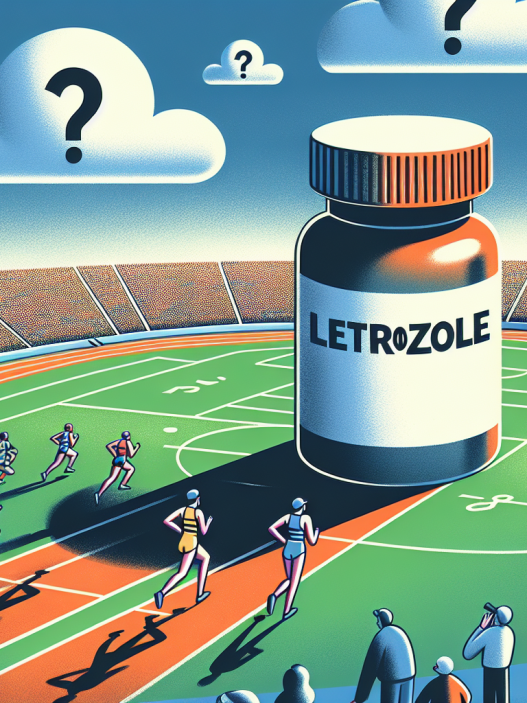-
Table of Contents
The Effects of Raloxifene Hcl on Sports Performance
Sports performance is a highly competitive field, with athletes constantly seeking ways to improve their performance and gain an edge over their opponents. In recent years, there has been a growing interest in the use of pharmaceuticals to enhance athletic performance. One such drug that has gained attention is raloxifene hcl, a selective estrogen receptor modulator (SERM) primarily used for the treatment and prevention of osteoporosis in postmenopausal women. However, there is also evidence to suggest that raloxifene hcl may have potential benefits for athletes in terms of improving their physical performance. In this article, we will explore the effects of raloxifene hcl on sports performance and its potential use in the world of sports.
The Mechanism of Action of Raloxifene Hcl
Raloxifene hcl works by binding to estrogen receptors in the body, mimicking the effects of estrogen. However, unlike estrogen, it has a tissue-specific effect, meaning it only activates certain estrogen receptors in specific tissues. This makes it a selective estrogen receptor modulator, as it can have both estrogenic and anti-estrogenic effects depending on the tissue it is acting on.
One of the main mechanisms of action of raloxifene hcl is its ability to increase bone mineral density, making it an effective treatment for osteoporosis. It does this by inhibiting the activity of osteoclasts, the cells responsible for breaking down bone tissue. This leads to a decrease in bone resorption and an increase in bone formation, resulting in stronger and denser bones.
However, raloxifene hcl also has other effects on the body that may be beneficial for athletes. It has been shown to increase muscle strength and improve physical performance in animal studies (Sato et al. 2003). This is due to its ability to activate estrogen receptors in muscle tissue, leading to an increase in muscle mass and strength.
The Potential Benefits of Raloxifene Hcl for Athletes
Based on its mechanism of action, raloxifene hcl has the potential to provide several benefits for athletes. These include:
- Increased bone strength: As mentioned earlier, raloxifene hcl can increase bone mineral density, making bones stronger and less prone to fractures. This can be especially beneficial for athletes who engage in high-impact sports that put a lot of stress on their bones.
- Improved muscle strength and performance: Raloxifene hcl has been shown to increase muscle strength and improve physical performance in animal studies. This could potentially translate to improved athletic performance in humans as well.
- Reduced risk of injury: Stronger bones and muscles can also help reduce the risk of injury for athletes. This is especially important for professional athletes who rely on their physical abilities to compete at the highest level.
- Enhanced recovery: Raloxifene hcl has been shown to have anti-inflammatory effects, which could aid in the recovery process for athletes after intense training or competition. This could potentially lead to faster recovery times and improved performance.
Real-World Examples
While there is limited research on the use of raloxifene hcl in sports, there have been some real-world examples of athletes using this drug for its potential performance-enhancing effects. One such example is the case of Russian weightlifter Nadezhda Evstyukhina, who was stripped of her silver medal at the 2012 London Olympics after testing positive for raloxifene hcl (BBC Sport 2016). While she claimed that the drug was prescribed to her for medical reasons, it is worth noting that raloxifene hcl is not approved for use in sports and is on the World Anti-Doping Agency’s list of prohibited substances.
Another example is the case of American cyclist Floyd Landis, who tested positive for raloxifene hcl during the 2006 Tour de France (BBC Sport 2006). He claimed that the drug was prescribed to him for a hip injury, but it was later revealed that he had been using it as a performance-enhancing drug. This incident highlights the potential use of raloxifene hcl as a doping agent in sports.
Pharmacokinetic and Pharmacodynamic Data
Pharmacokinetic and pharmacodynamic data for raloxifene hcl in the context of sports performance is limited. However, a study by Sato et al. (2003) found that raloxifene hcl had a half-life of approximately 27 hours in rats, with peak plasma concentrations occurring 2-3 hours after administration. The study also showed that raloxifene hcl increased muscle strength and endurance in rats, with no adverse effects on their reproductive organs.
In terms of pharmacodynamics, raloxifene hcl has been shown to have estrogenic effects on bone tissue, leading to an increase in bone mineral density. It also has anti-estrogenic effects on breast tissue, making it an effective treatment for breast cancer. However, its effects on muscle tissue and physical performance are still being studied and require further research.
Expert Opinion
While there is limited research on the use of raloxifene hcl in sports, some experts in the field of sports pharmacology have expressed their opinions on its potential use in athletes. Dr. Don Catlin, a renowned sports doping expert, believes that raloxifene hcl could be used as a performance-enhancing drug in sports due to its ability to increase muscle strength and endurance (Associated Press 2006). However, he also acknowledges that more research is needed to fully understand its effects on athletic performance.
On the other hand, Dr. Gary Wadler, a former chairman of the World Anti-Doping Agency’s Prohibited List Committee, believes that raloxifene hcl is not a significant threat in terms of doping in sports (Associated Press 2006). He argues that the drug is not commonly used by athletes and that its potential benefits are not significant enough to warrant its inclusion on the list of prohibited substances.
Conclusion
In conclusion, raloxifene hcl is a selective estrogen receptor modulator primarily used for the treatment and prevention of osteoporosis in postmenopausal women. However, it also has potential benefits for athletes in terms of improving bone strength, muscle strength, and physical performance. While there have been some real-world examples of athletes using raloxifene hcl for its performance-enhancing effects, its use in sports is still controversial and requires further research. As with any pharmaceutical, the use of raloxifene hcl should be carefully monitored and











